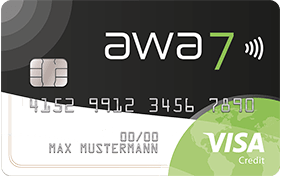US Bank Balance Transfer Credit Card
Advertiser
Navigating modern financial landscapes can be daunting, but understanding the tools available can simplify managing debt. A prominent option for managing existing credit card debt is utilizing a balance transfer credit card from U.S. Bank.
This card offers a valuable 0% introductory APR on balance transfers, providing an opportunity to reduce interest payments and focus on paying down principal debt.
The process entails transferring existing balances from other credit cards or loans to a U.S. Bank credit card, which could streamline payments and potentially lighten financial burdens. It’s important to note that any transferred balances cannot be from other U.S. Bank accounts. More details on this can be found through U.S. Bank’s customer service channels.
Consider U.S. Bank’s dedication to providing clear instructions on balance transfers and customer support to ensure a seamless experience. This post will delve into how utilizing such resources effectively can make a significant impact on one’s financial health.
Understanding Balance Transfer Credit Cards
Balance transfer credit cards allow cardholders to move debt from one credit card to another, typically with better terms like a lower interest rate. These options can be a strategic way to manage high-interest debt efficiently.
Applly Now!
How Balance Transfers Work
A balance transfer involves shifting debt from one credit card to another with more favorable terms. Cardholders often look for cards that offer a low introductory APR, often 0%, for a set period. This feature helps reduce interest costs and focus more on repaying the principal balance.
Cardholders must pay a balance transfer fee, typically a percentage of the total amount transferred. It’s important to check how long the introductory rate lasts and what the interest will be after this period ends. Timing your payments to make the most of this low-interest period is crucial.
Comparing Balance Transfer Offers
When comparing balance transfer offers, look for cards with the longest 0% APR period. This gives more time to pay off the transferred balance without interest.
Examine any fees, such as annual fees or balance transfer fees, and weigh them against the savings from the lower interest rate. Some cards may offer a 0% APR but include a higher transfer fee. Understanding the total cost and savings is important for making an informed decision.
Eligibility and Application Process
Eligibility for a balance transfer credit card usually depends on credit history and score. Banks may require a good to excellent credit score for approval. It’s recommended to check your credit score and review your credit report for any discrepancies before applying.
The application process often involves completing an online form or speaking with a representative from your chosen credit card bank. It’s important to have all relevant financial information ready. Once approved, the new card issuer typically handles the debt transfer process, though it remains crucial to monitor the transfer’s progress.
Maximizing Benefits and Managing Risks
Using a U.S. Bank balance transfer credit card can offer significant advantages for managing credit card debt, but it’s crucial to be aware of the risks. Understanding strategies for debt repayment, potential pitfalls, and how these decisions affect your credit score are key components for maximizing benefits.
Strategies for Debt Repayment
One effective strategy is to create a detailed repayment plan. After transferring a balance to a U.S. Bank card with a lower interest rate, prioritize paying off the debt during the promotional period to avoid high interest once it ends. Consider making bi-weekly payments instead of monthly to reduce the principal amount faster.
Utilizing automation for payments ensures consistency and avoids missed payments, which could jeopardize the low interest rate benefits. Monitor the billing statements for any discrepancies and adjust the repayment plan as needed to stay on track.






